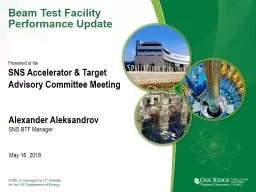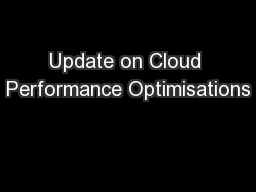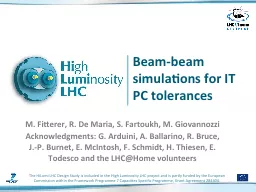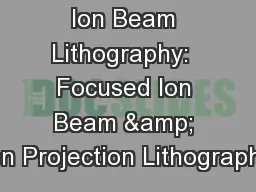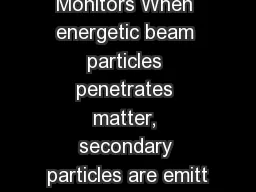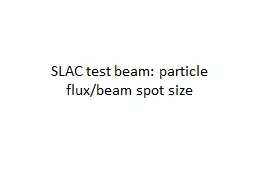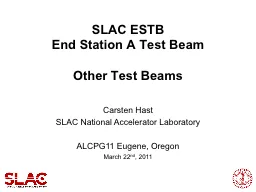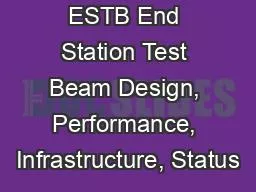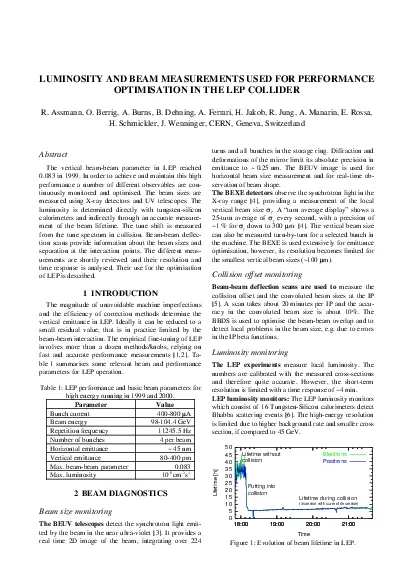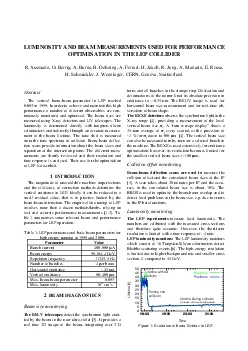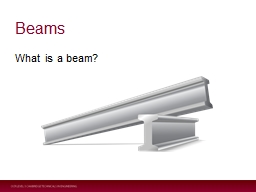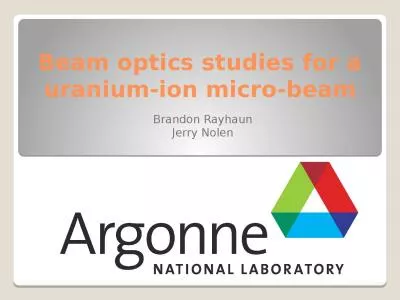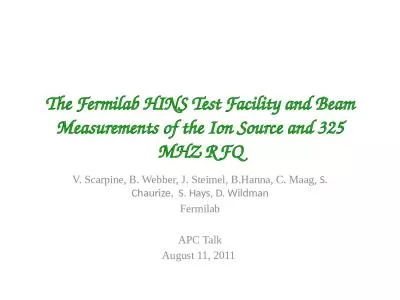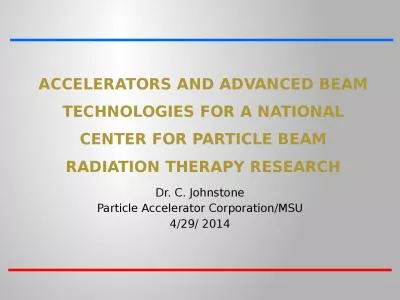PPT-Beam Test Facility Performance Update
Author : funname | Published Date : 2020-07-03
Presented at the SNS Accelerator amp Target Advisory Committee Meeting Alexander Aleksandrov SNS BTF Manager May 16 2018 SNS Beam Test Facility BTF is close replica
Presentation Embed Code
Download Presentation
Download Presentation The PPT/PDF document "Beam Test Facility Performance Update" is the property of its rightful owner. Permission is granted to download and print the materials on this website for personal, non-commercial use only, and to display it on your personal computer provided you do not modify the materials and that you retain all copyright notices contained in the materials. By downloading content from our website, you accept the terms of this agreement.
Beam Test Facility Performance Update: Transcript
Download Rules Of Document
"Beam Test Facility Performance Update"The content belongs to its owner. You may download and print it for personal use, without modification, and keep all copyright notices. By downloading, you agree to these terms.
Related Documents

